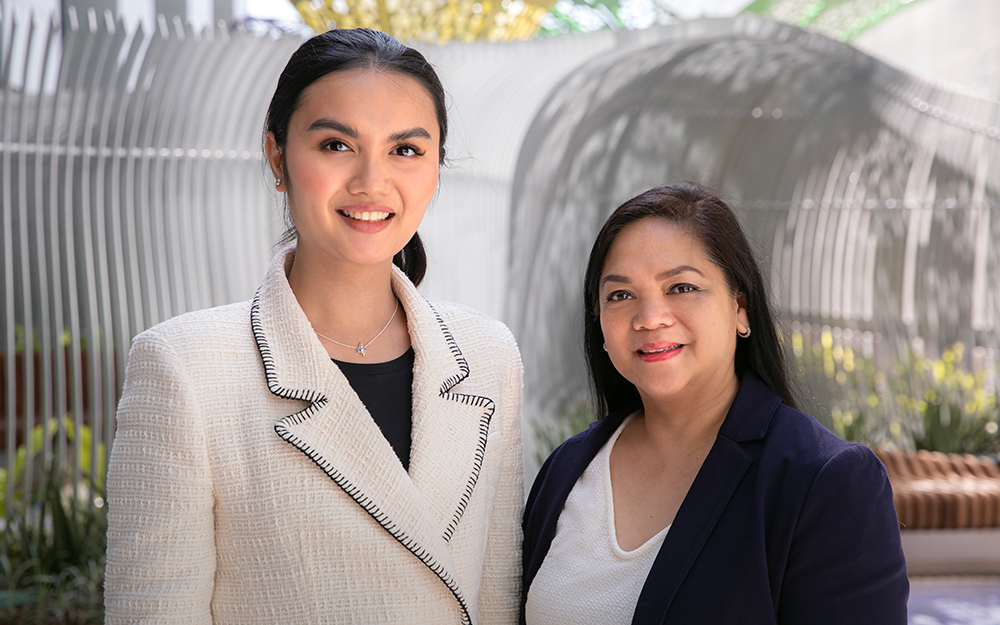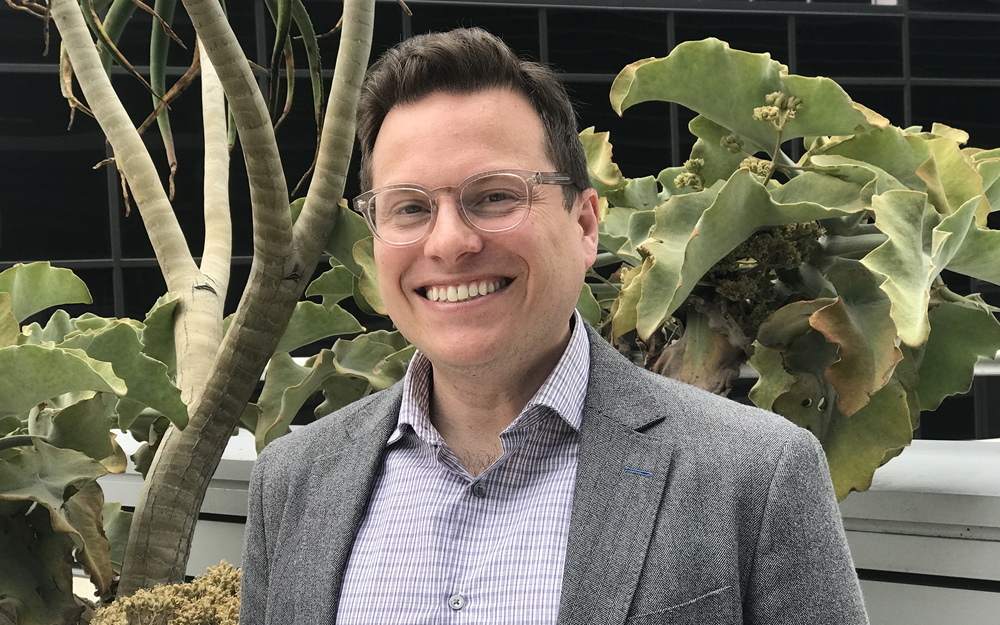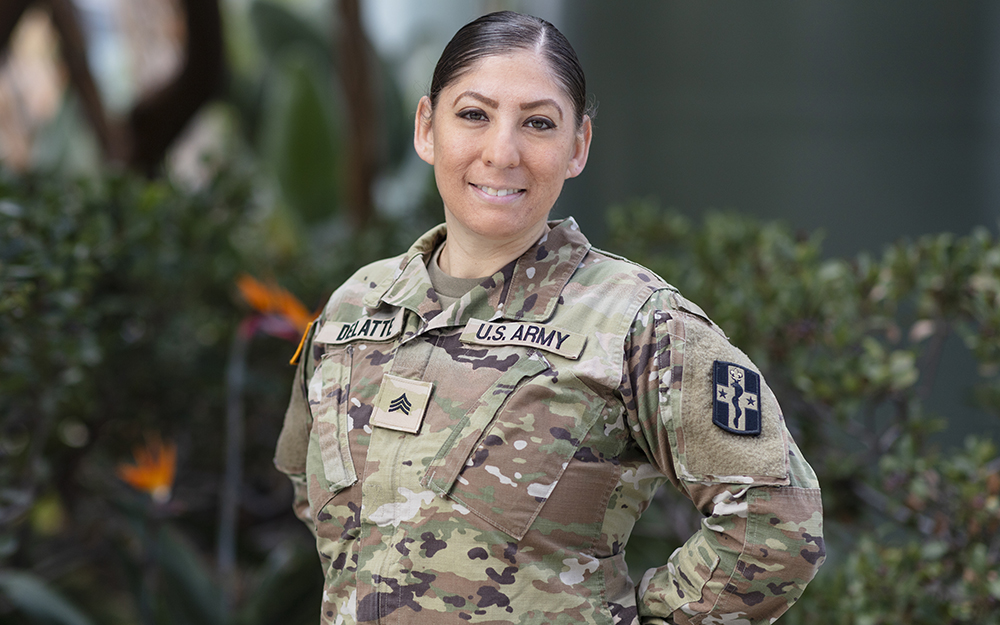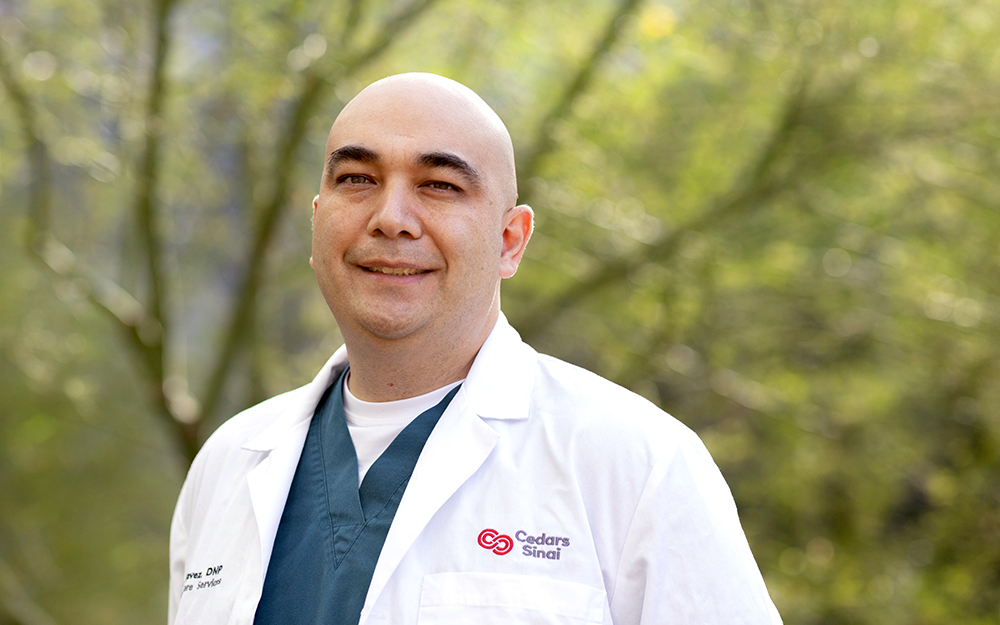Transition Program Gives Promising Nurses Extra Support
Date
May 24, 2023

Date
May 24, 2023
Credits
Medical providers featured in this article
In Brief
{{cta-block}}
Even as a young woman in the Philippines, Nico Olalia didn’t just want to be a nurse—she wanted to be a Cedars-Sinai nurse.
Both her mom and her aunt have worked at Cedars-Sinai, and when she graduated from nursing school in the Philippines in 2019, Olalia applied for her nursing license in California. The process stretched into 2020, and she received word she passed her board exams on a memorable day: March 13, 2020, the day the U.S. president declared COVID-19 a national emergency.
“I have a passion for the nursing profession itself, and I was just excited to run out the door and start—but then the breaking pandemic news came in: No one’s allowed to go anywhere,” Olalia says. “I applied to new graduate nurse residency programs in almost every state, but I got rejection after rejection.”
Olalia’s story is common in this regard: Despite the pandemic driving up demand for nurses, many hospitals paused their residency programs during stay-at-home orders to protect staff and patients. Olalia opted to work in a skilled nursing facility, where she worked her way up to be assistant director of nursing. Other newly licensed nurses could be found giving COVID-19 vaccines and working in clinics, medical offices or other nursing roles outside of hospital settings.
A novel program at Cedars-Sinai offers a bridge for nurses who have experience, but not in a hospital inpatient setting. The Diversity Equity and Inclusion Transition to Practice Program offers nurses the same support as new graduate residents: workshops and close mentorship for a year.
Olalia was the program’s first participant and success story. During her first year, she completed a master’s degree in nursing leadership, earned board certification in geriatrics and scored a promotion. She works mostly with patients who have had spine surgery.
Olalia also helps select candidates for the program and provides mentorship herself. More than 30 nurses have successfully completed the program.
“We discovered we were missing out on a lot of talented nurses who just needed a pathway to transition from one kind of nursing care to another.”
A much-needed bridge
The U.S. Bureau of Labor Statistics projects an additional 275,000 nurses will be needed by 2030. The nursing shortage is nearing a crisis due to a growing number of older people, nurse retirements and the demands of the job. The strains of the pandemic further exacerbated the situation, pushing many from the profession.
These growing pressures are only part of what inspired the Cedars-Sinai program, which at its heart is driven by a commitment to diversity, equity and inclusion.
“It’s easy for hospitals to develop cookie-cutter requirements for nurses and only accept nurses from a top nursing school or who have a very specific kind of experience,” says Kathleen Burgner, a nursing professional development practitioner in the Geri and Richard Brawerman Nursing Institute, who leads the program. “We discovered we were missing out on a lot of talented nurses who just needed a pathway to transition from one kind of nursing care to another.”
Limiting nurse recruitment to only certain schools or professional backgrounds can also limit the diversity of applicants.
“Just as we value each of our patients as individuals, we value each member of our staff as individuals with different origins,” Burgner says. “We’ve brought in highly qualified nurses from Canada, India and the Philippines, as well as local nurses who did not start their careers in an academic medical center.”
As many as 33% of nurses leave the profession in their first two years of practice. Programs to support nurses early in their career and at key transition points are especially important.
The pursuit of excellence
Olalia recently led a presentation on the Transition to Practice Program to a visiting team from the American Nurses Credentialing Center that was evaluating Cedars-Sinai for its sixth consecutive Magnet Designation, the highest national honor for professional nursing practice.
“Magnet is all about developing nurses,” Olalia says. “We need to believe in nurses from different backgrounds. From the executive leadership to the unit leadership, they believed in me and supported me.”
All nurses participating in the program have met rigorous performance standards.
“One measure of success is whether participants have become preceptors themselves,” Burgner says. “Many of them are just reaching their first year, and we’re starting to see more of them participating in leadership on their units and helping to orient others.”
Olalia is working on a doctor of nursing practice degree in health system leadership.
“I made a commitment to myself to be a nurse and to lifelong learning,” Olalia says. “You may come from anywhere. You can start anyplace—a tiny hospital or a nursing home. You can make changes and contribute. It’s not just for personal fulfillment. It’s for patients and our responsibility to the nursing profession. Believe in your skills and they can bring you anywhere.”





